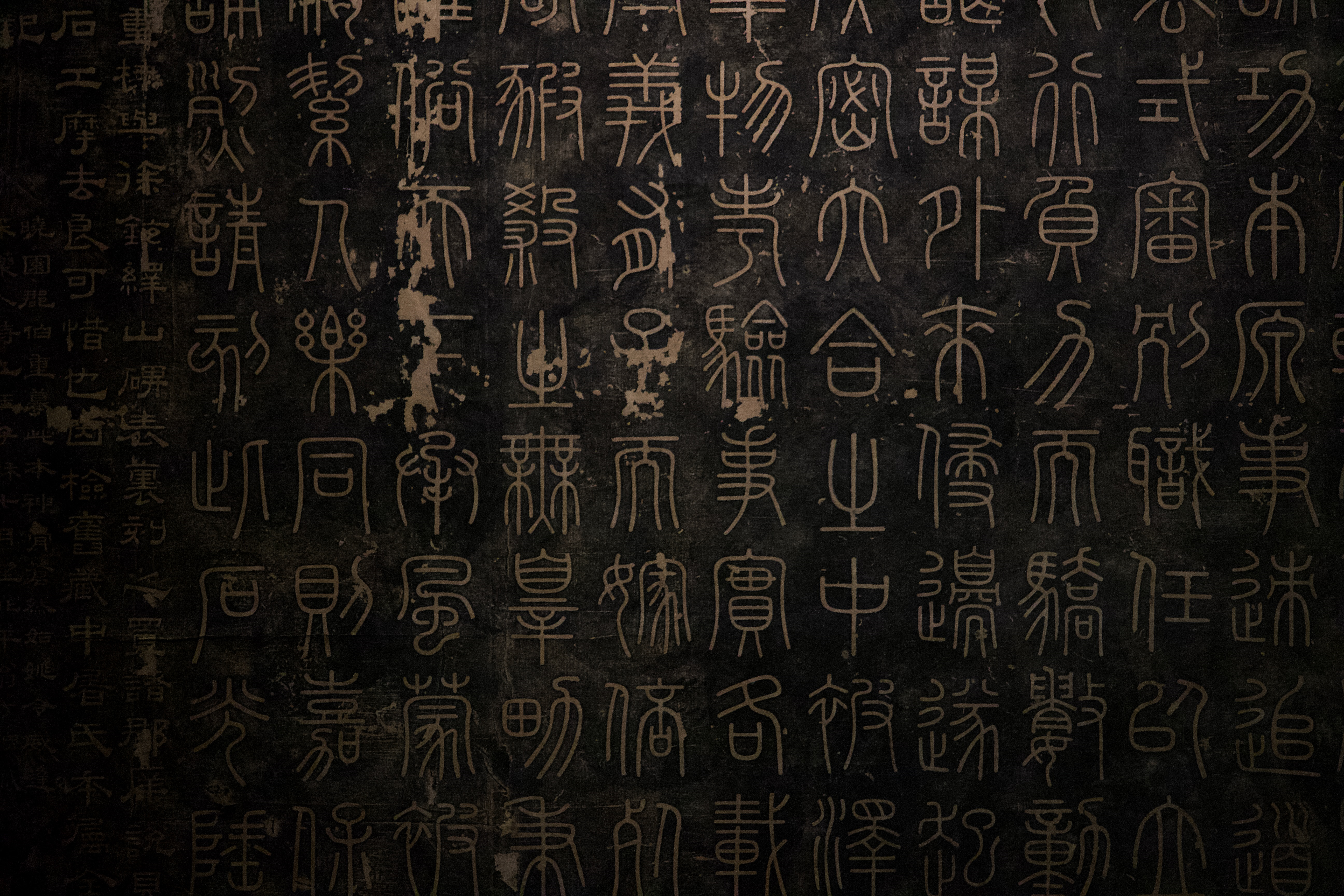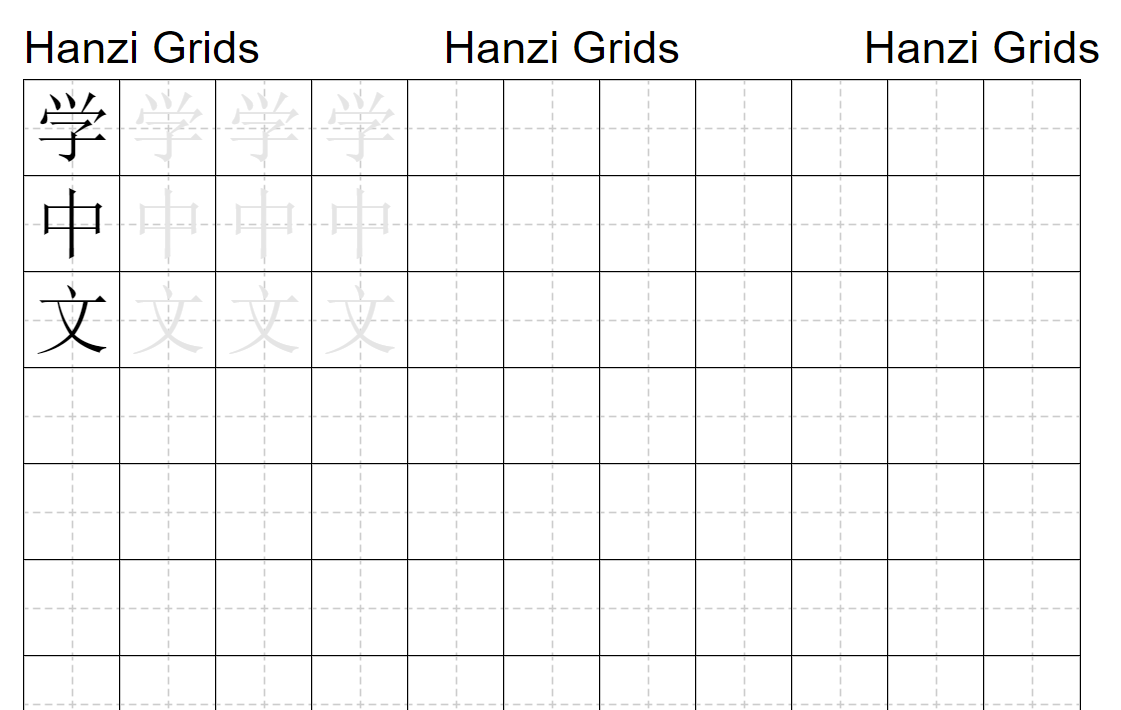Best Ways to Learn to Write Chinese Characters (And Why You Should Study Them)
September 01, 2022
Writing Chinese characters may seem like a challenging skill to master, but with a bit of time and perseverance, it can be achieved using the right methods and tools.
In an attempt to help you learn to write Chinese characters, in this article I will discuss:
why you should learn to write Chinese characters
the different scripts used to write Chinese characters
tips on how to learn Chinese characters writing
tools for learning to write Chinese characters.
Let’s dig in!
Why is Learning to Write Chinese Characters Important?

1. Writing Chinese characters can help improve our Chinese speaking skills
Researchers have shown that “producing items by means as simple as saying, writing, or typing them can yield substantial memory improvements” (MacLeod & Bodner, 2017). As such, writing Chinese characters can help us to better remember the meaning, pronunciation, and use of new vocabulary and grammar structures, thus improving our Chinese speaking skills.
2. Writing Chinese characters can help improve our Chinese reading skills too
Writing a Chinese character is a great way to become intimate with its components which can help train our brain to visually recognize it, and therefore improve our Chinese reading skills.
3. Knowing how to write Chinese characters can be handy if you don’t get your tones right
Writing Chinese characters can help clear up a misunderstanding if you get your tones wrong when speaking to a Chinese native speaker. This is exactly what I had to do when someone handed me some 烟 yān (cigarettes) when I asked them for 盐 yán (salt).
Bear in mind that you would have to write the actual Chinese characters should you find yourself in a similar situation, since not all native Chinese speakers know pinyin.
What Are The Different Types of Chinese Characters?

The oldest Chinese character writings date back to the Shang dynasty and were found on oxen bones and turtle shells. They are referred to as Oracle bone characters.
Since then, the Chinese writing system has gone through multiple stages of evolution: from the 金字 jīnzì (found on bronzes) to 篆书 zhuànshū (seal characters), which then were simplified into 隶书 lìshū (clerical script). This latter was the official Chinese character writing system used during the Han Dynasty (207 B.C. - 220 A.D.).
Three other forms of Chinese character writings emerged around the same time, namely 楷书 kǎishū (regular script), 行书 xíngshū (running script), and 草书 cǎoshū (grass script).
行书 is a semi-cursive style of writing Chinese characters that most native speakers still use for handwritten notes, while 草书 is a cursive style of shorthand Chinese.
Of all these different ways of writing Chinese characters, 楷书 is what’s taught in formal Chinese language classes. It’s also the most widely used form of Chinese writing in printed and digital materials.
The tips offered from here on out are for learning to write this regular Chinese script.
- Learn more about the history of Chinese characters here.
How to Learn to Write Chinese Characters?
Step 1 in learning to write Chinese characters: READ.
Whenever you wish to learn to write a new Chinese character, you should read it first. And I don’t mean passively glancing at the pinyin and the meaning of the Chinese character, but rather actively read it by paying attention to the tones and various components to try and understand the meaning behind it.
Indeed, elements like radicals can hint at the meaning and/or the pronunciation of the character depending on the type of character you have at hand.
For example, if you are learning a picto-phonetic character such as 基 jī (foundation), you will see that it is made of two main elements:
- 土 tǔ (earth) - semantic element
- 其 qí (his, her, its) - phonetic element
We’ve written a whole article about Chinese radicals in case you’re not familiar with them, or you can use online dictionaries with character decomposition functions such as MDBG as a reference.
Step 2 in learning to write Chinese characters: SPELL.
Once you’ve read the Chinese character you wish to write, spell the strokes out loud, using proper stroke order. This is also how native Chinese speakers spell Chinese characters!
For instance, the character 中 zhōng is spelled as
- 竖 shù vertical stroke
- 横折 héngzhé horizontal-vertical stroke
- 横 héng the horizontal stroke
- 竖 shù vertical stroke.
To better help in memorizing them, feel free to air-write the Chinese characters using your fingers.
If you have difficulty recalling stroke order rules, you can refer to this article where we explain everything about strokes and why they’re important, or look up the Chinese character on strokeorder.info to see the stroke order animation.

Step 3 in learning to write Chinese characters: PRACTICE WITH A REFERENCE and revise.
The third step in learning to write a Chinese character is to practice writing it while looking at a reference character.
You can write the Chinese character on a Chinese character practice sheet. The grids on practice sheets serve as a guideline which can help balance the proportion of each component in relation to the entire character. Indeed, some characters may use a 2:1 left-to-right ratio while others would have a 1:2 left-to-right proportion. For more details on character proportion rules, check out this article by WrittenChinese.
If you are unable to find Chinese grid papers, print out your customized character practice sheet using grid paper generators such as Hanzi Grids or Chinese Practice Sheet Generator by Purple Culture.

At the end of each Chinese character writing session, compare your characters to the reference character, and see what needs to be improved. Practice writing the Chinese character daily until you feel you can write it without a visual aid.
Tip: If you are a beginner, I recommend to start practicing with common characters such as the most common verbs in Chinese as well as similar-looking characters such as 士 and 土 as well as 人 and 入.
Step 4 in learning to write Chinese characters: PRACTICE WITHOUT A REFERENCE and revise.
When you feel confident that you’ve memorized the correct stroke order and proportion rules, you can advance to writing the Chinese character on a sheet of blank paper without grids, or a visual reference.
This may seem difficult, and it’s okay if you need to peek at the character for one second at first, but ultimately what’s important is that you should strive to be able to write the Chinese character from memory.
At this stage, you may also skip the papers and practice writing Chinese characters on your smartphone, laptop, or tablet instead. To do so, simply switch your keyboard’s input method to the Chinese “writing” or practice using services such as Skritter.
Just as with Step 3, compare your Chinese character writing to the initial reference at the end of each practice session and keep practicing until you’re confident you’ve mastered it.
Step 5 in learning to write Chinese characters: WRITE DAILY.
Once you’ve learned how to write Chinese characters, do your best to practice it every day to avoid 提筆忘字 tíbǐwàngzì (forgetting how to write Chinese characters.)
You don’t necessarily need to have a daily Chinese character writing session per se, but rather try to use Chinese as much as you can whenever you need to write something down (shopping lists, to-do lists, journals, etc.).
Recommended tools for learning Chinese characters
1. Chinese dictionary MDBG (free):
- Customizable settings
- Animated stroke order display
- Comes with character decomposition feature
- Option to find sentence examples from Tatoeba
- Option to add characters to Skritter vocabulary list
- Shows HSK level
2. Grid paper generator
Purple Culture Practice Sheet Generator
Pros:
- No registration required
- 8 different grid styles available for free (田字格 field,米字格 rice, 方格 square grid, etc)
- Includes ready-to-download sample worksheets
- Paid option to show stroke order, pinyin, and English translation
Cons:
- No preview
Pros:
- Easy to use
- Includes customized worksheet preview
Cons:
- Only 1 grid style available for free
- requires registration
- no option to show stroke order
3. Recommended for stroke order practice:
Pros:
- Comes with audio recordings
- Shows stroke order
- Uses prompts for easy vocabulary, tone, and pinyin review
Cons:
- Expensive
Arch Chinese Handwriting Practice
Pros:
- No registration required
- Free with optional paid subscription
- Comes with audio recordings and stroke hints
- Free vocabulary list
Cons:
- The website feels outdated and cumbersome
- the vocabulary lists do not display the words included in
Conclusion
Writing Chinese characters can have a ripple effect on our overall Chinese skills if learned the right way. Not only can it boost our Chinese speaking and reading skills, but can also be valuable when verbal communication is inefficient.
Although it may seem like a daunting task, learning to write Chinese characters simply comes down to identifying the character components, and practice writing them with the stroke order and proportion rules in mind.
I hope you find the tips I shared in this article useful, and that you now feel less intimidated and more motivated to learn to write Chinese characters.
About the Author
Juli Mboty has called China home for over 11 years where she became passionate about the Chinese culture, language, and history.
